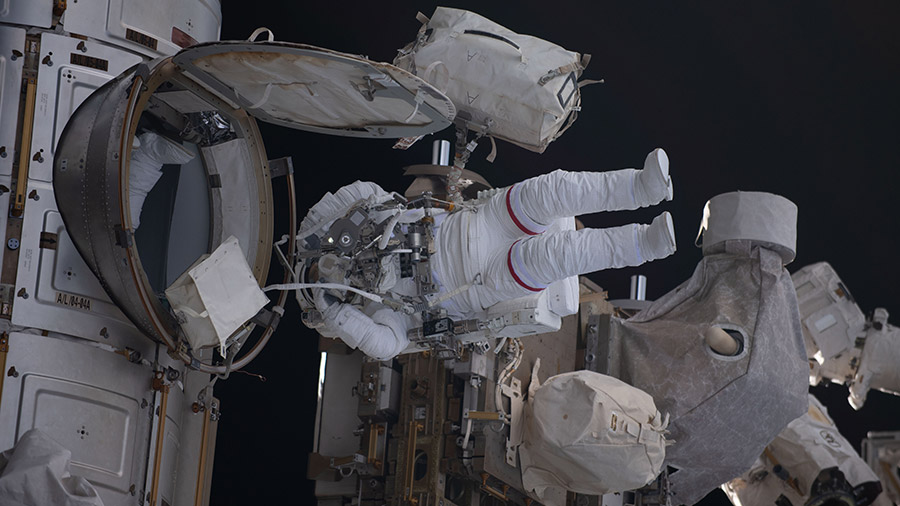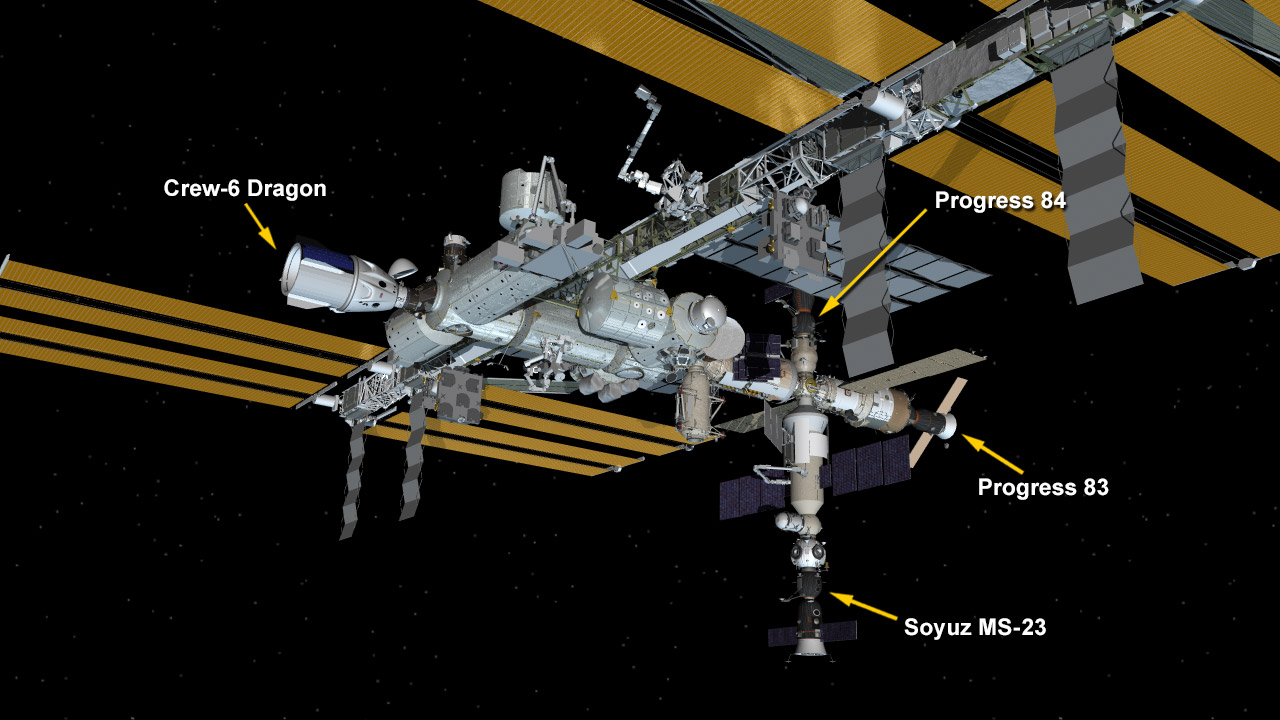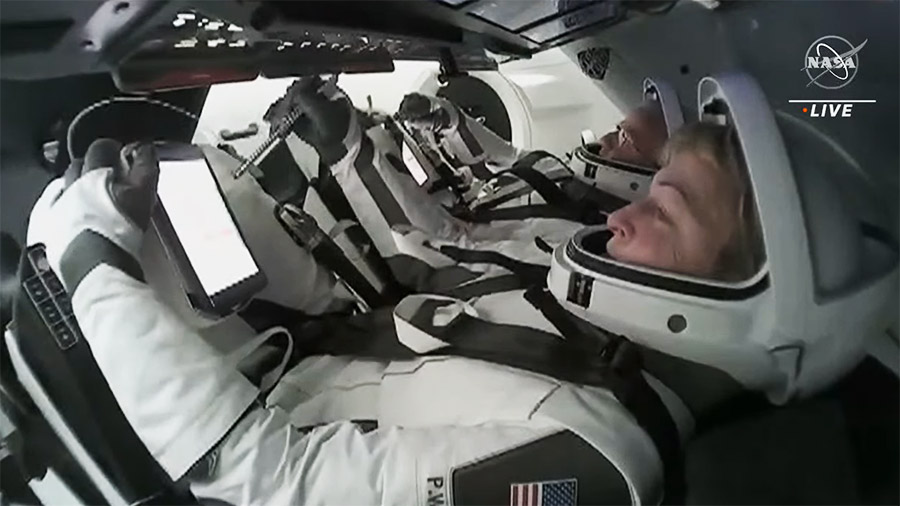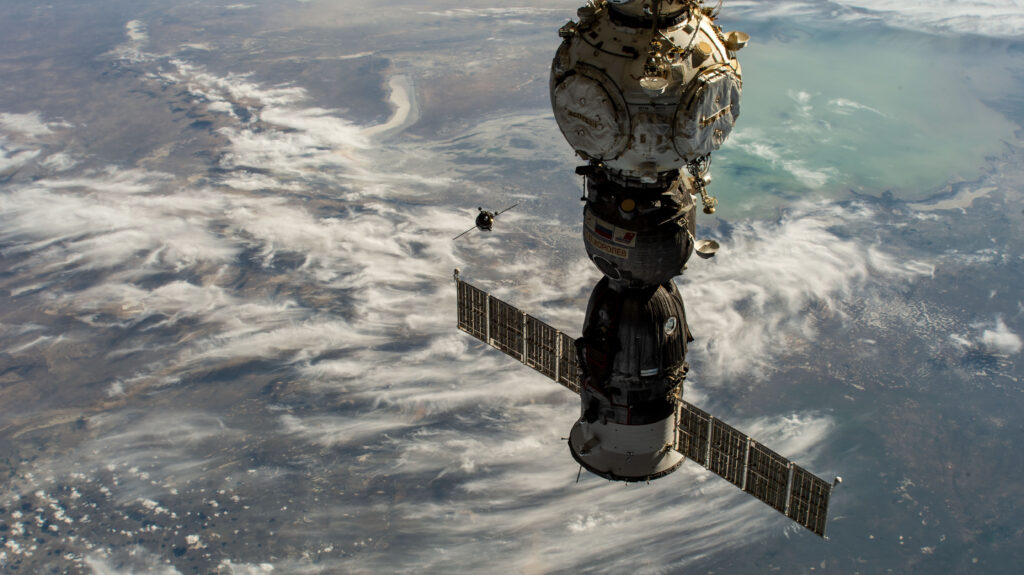
Spacesuits and science filled the Expedition 69 schedule at the end of the workweek aboard the International Space Station. Back on Earth, a cargo-filled U.S. resupply ship is counting down to its launch to replenish the residents living on the orbital outpost.
NASA astronauts Stephen Bowen and Woody Hoburg are preparing for a June 9 spacewalk to install one of two new roll-out solar arrays on the space station’s starboard-side truss structure. The duo spent Friday morning configuring Extravehicular Mobility Units (EMUs), or spacesuits, and readying spacewalk tools inside the Quest airlock. Hoburg then joined NASA Flight Engineer Frank Rubio in the afternoon for a fit check of his EMU.
The crew also continued its ongoing microgravity research to improve health on Earth and in space. Bowen set up blood samples in a centrifuge before stowing them in a science freezer to learn how spaceflight affects cellular immune functions. UAE (United Arab Emirates) astronaut Sultan Alneyadi pedaled on an exercise while attached to sensors monitoring his breathing and blood pressure for the Cardiobreath astronaut health study. Rubio swapped out protein crystal samples in the Kibo laboratory module for a study advancing biochemistry research in space.
Roscosmos Flight Engineers Dmitri Petelin and Andrey Fedyaev worked together on Friday for a human research study that investigates how microgravity affects the digestion process. Commander Sergey Prokopyev studied how micro-particles such as electrons, ions, and neutral gases, interact and turn into plasma crystals when exposed to electrical charges.
The SpaceX Dragon cargo craft is counting down to launch at 12:35 p.m. EDT on Saturday from Kennedy Space Center in Florida with two new roll-out solar arrays packed inside its unpressurized trunk. Mission managers polled the station and Dragon teams on Thursday and reported all systems are go for launch to the orbiting lab. However, weather forecasters on Friday announced conditions at the launch pad are 70% no-go with scattered thunderstorms predicted for both Saturday and Sunday launch attempts.
For now, Dragon’s automated rendezvous and docking to the Harmony module’s space-facing port is scheduled for 5:36 a.m. on Monday. Two days after that the Canadarm2 robotic arm will extract the roll-out solar arrays from Dragon’s trunk and stage them on a pallet attached to the starboard truss. The two spacewalkers will then be able to retrieve the solar arrays and begin the installation work.
Learn more about station activities by following the space station blog, @space_station and @ISS_Research on Twitter, as well as the ISS Facebook and ISS Instagram accounts.
Get weekly video highlights at: https://roundupreads.jsc.nasa.gov/videoupdate/
Get the latest from NASA delivered every week. Subscribe here: www.nasa.gov/subscribe








